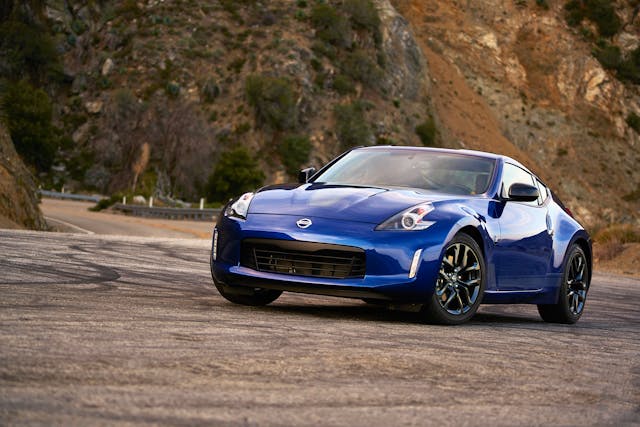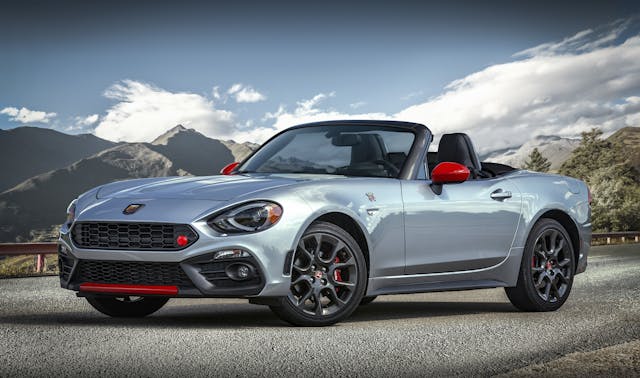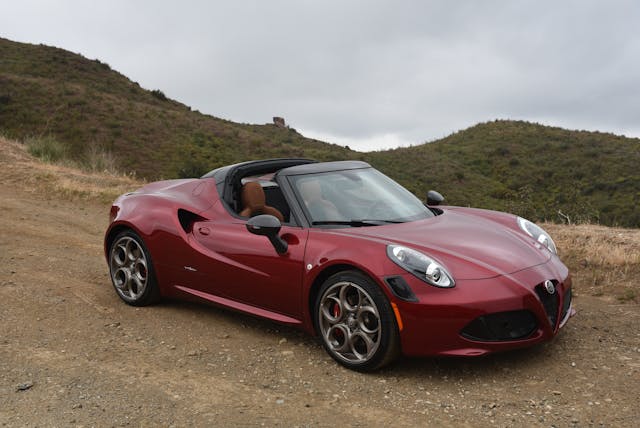Will these 6 used cars be bonafide collectibles?
As enthusiasts, we’re always on the lookout for interesting vehicles to add to our stable. Often, that means sifting through the chaff of average sedans and crossovers for the standout variant that engineers and designers put extra effort into. Such vehicles tend to target a niche of enthusiasts, which means volume was either limited or sales were simply low. Over time these rarer cars, if desirable for one reason or another, can command significant demand.
At the proverbial watercooler, Hagerty editors and valuation experts frequently look ahead wondering which collector cars will heat up in the future. What used cars of today are the collectibles of tomorrow?
Our annual Bull Market list focuses on collectible cars that are poised to increase in value, but for this quick exercise we’ll take a shot at some other potential collectibles are for the moment not among the vehicles for which we track data. Are any of these six rides merely be rising stars in the making?
Lexus GS F

This BMW M5 competitor was a favorite of some editors on our U.K.-based team, who were saddened that the svelte mid-sizer had been put out to pasture. Lexus had planned on bringing the GS F to market at the same time as the compact IS F, and despite its lovely chassis tuning and wonder blend of quiet sophistication and plentiful V-8 power, the super sedan only lasted for a single generation. After debuting in 2017 with nearly 1500 sales in North America, sales tapered off until production ended in 2020, with fewer than 2500 sold in North America in total. We’ve already seen plenty of non-luxury performance sedans like the Pontiac G8 and Chevrolet SS become modern collectibles, and with Lexus’ reputation for reliability there’s no reason to think the GS F won’t follow suit.
Nissan 370Z

We now know that the gorgeous Nissan Z Proto was all but production ready, wearing only the thinnest of disguises over what would end up being the new Z. That was no big surprise. With the next-generation of Nissan Z moving to a twin-turbo V-6, that development renders the outgoing 370Z one of the last affordable two-seaters to offer a naturally aspirated engine and a manual transmission. Considering many 350Zs were hot-rodded and turned into drift toys when they became affordable, the last of the 370Zs may a savvy pick to snap up before they meet a similar fate. Because the car was so dated in its golden years, Nissan wasn’t moving a lot of 370Z metal in its last few years of production, but as the saying goes, many sports car buyers won’t know what they’ve got ‘til it’s gone.
Fiat 124 Spider Abarth

It’s no secret that early Miatas have become increasingly collectible. Every auto publication has sung the NA Miata’s praises since the spunky roadsters debuted, and we’ve mentioned several times that their market is heating up. The same goes for its successor, the NB. The current Miata, the ND generation, keeps the same formula as the original and even managed to drop 200 pounds of baby fat from the previous generation.
Naturally, the very similar 124 Abarth, built alongside the Miata in the same factory but with Fiat’s turbocharged, 1.4-liter Multi-Air four-cylinder turbo engine, maintains much of that same wonderful character and sharp handling. The base Fiat 124 Spider was good for 160 hp compared to the Miata’s 155 hp, while the Abarth variant added a Bilstein suspension and limited-slip differential among other performance goodies, along with an extra four horses and a nice exhaust rumble. The Miata got a bump to 181 hp for 2019 to offer even more performance, but the Abarth was still an engaging drop-top that had a relatively short production run prior to its discontinuation following the 2020 model year. Even if it didn’t have pure Miata DNA, a relatively low-volume driver’s car is a good recipe to make an excellent collectible. When the answer you’re looking for is Miata with a turbo twist, the Abarth will start to look real good.
Volvo S60/V60 Polestar

Before it spun off from Volvo to become its own brand of high-tech performance luxury cars, Polestar was a performance sub-brand of the normally staid Swedish car company. The exciting Polestar version of the S60 sedan/V60 wagon first used a 3.0-liter turbocharged inline-six to deliver 345 horsepower to an AWD drivetrain. The U.S. got precious few of these factory-tuned S60 Polestars sedans in 2015, 40 to be exact, but we also got 80 of the V60 wagons. In 2016 those numbers grew by just more than double. In 2017 a 362-horsepower, 2.0-liter twin-charged four-cylinder took over and lasted until 2018. That marked the end of full-Polestar performance models, ahead of the brand’s transition to an electric automaker.
Alfa Romeo 4C

Packing a turbocharged, 237-hp four-cylinder, the curvy, mid-engine Alfa Romeo 4C wasn’t a brutal powerhouse. Instead, the coupe and spider, which both relied on a carbon-fiber monocoque chassis and aluminum subframes, used their low curb weight and centralized mass to deliver unique handling. Although they started in the mid-$50,000 range—cars with this type of construction can cost twice that—fewer than 2200 were sold in North America over an eight-year production run. Now that they’re out of production following a final run of 33 Stradale models, and there are few heirs to the throne of affordable mid-engine performance aside from the C8 Corvette, the 4C may hit the bottom of its depreciation curve. After all, when was the last time you could purchase a modern, mid-engine Italian car for the price of a full-size pickup?
Chevy Colorado Diesel

Oh yeah, pickups. We’re haven’t ignored them. When the third-generation Colorado debuts next year, most expect the sole powertrain to be the 2.7-liter turbocharged four-cylinder that also serves as the base engine in the Silverado. With an estimated 310 horsepower and 420 lb-ft of torque, it will be the most powerful engine ever installed in the mid-sizer, while also packing 50 percent more torque than the current naturally aspirated 3.6-liter six.
What it won’t have is the venerable 2.8-liter VM Motori diesel that has been available in the Colorado since 2016—marking a return to diesel in the mid-size pickup segment in the U.S. and Canada. While many owners appreciate the power and responsiveness of the 3.6-liter, the diesel affords extra range thanks to its much-improved highway fuel economy. For savings at the pump and long-distance overlanding (that goes for the ZR2 in particular), the diesel Colorado might gain traction in the near future. We all know that diesel fans are a fervent bunch, so these mini-Duramax Colorados could maintain a cult following after they end production. Not everyone will so easily say goodbye to a diesel truck when faced with an electric alternative.

